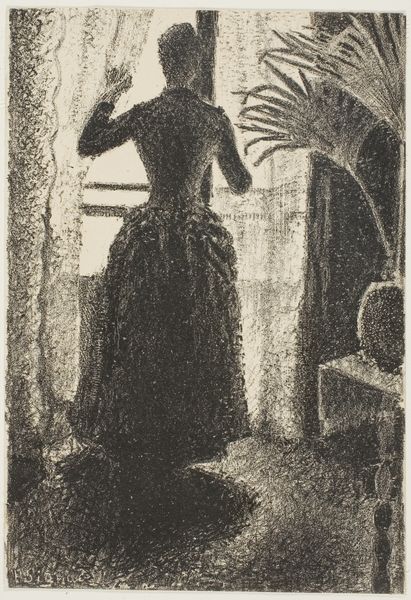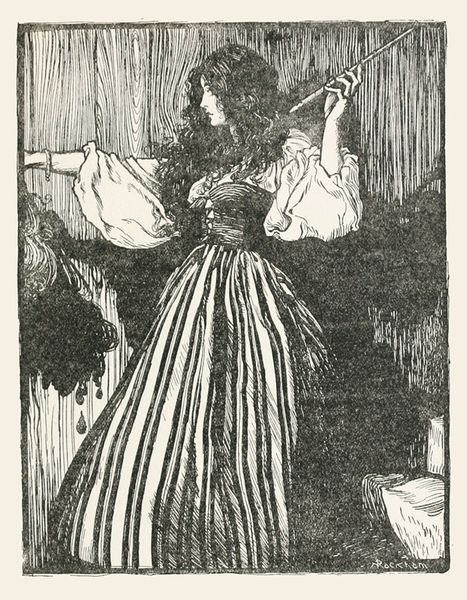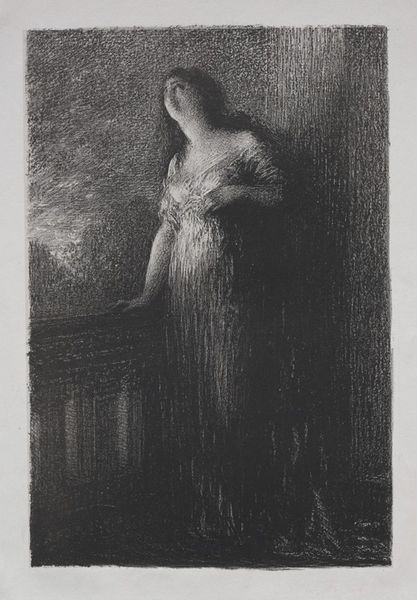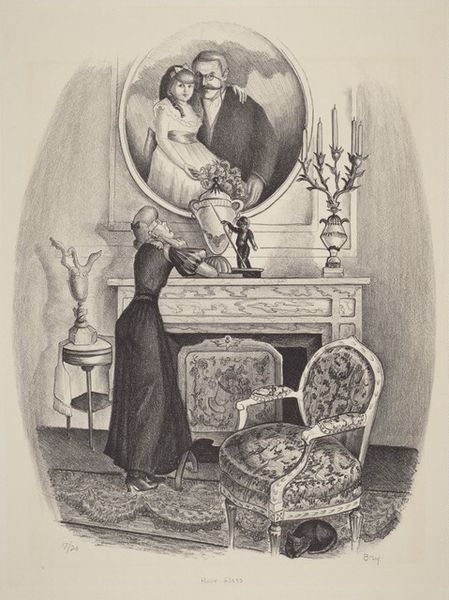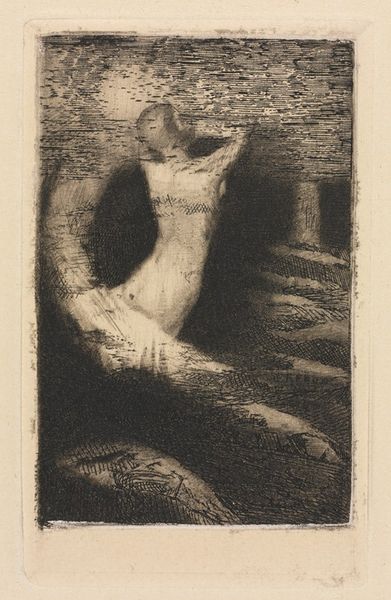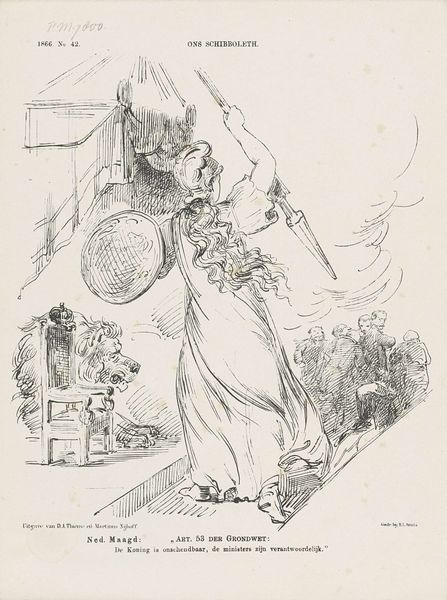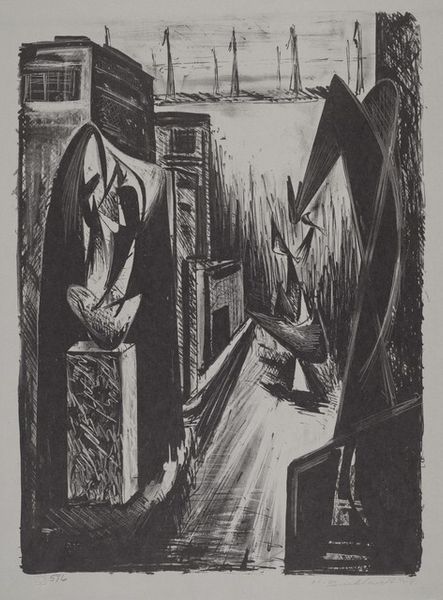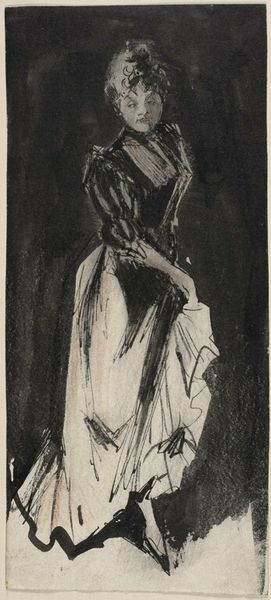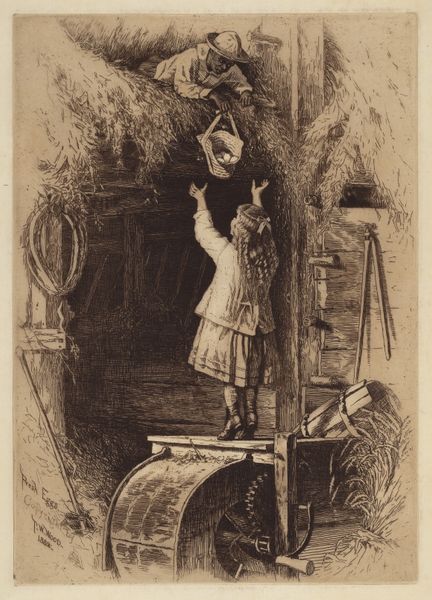
drawing, print, pencil
#
portrait
#
pencil drawn
#
art-deco
#
drawing
# print
#
pencil drawing
#
pencil
#
portrait drawing
Dimensions: image: 313 x 202 mm sheet: 407 x 274 mm
Copyright: National Gallery of Art: CC0 1.0
Curator: It's remarkable how even in monochromatic pencil, Barbara Crawford evokes a sense of elegant whimsy in "Schiaparelli Says Black," created in 1939. There’s a flatness to it but depth in tone; how does it strike you? Editor: It feels surprisingly contemporary! I see a poised figure against a backdrop of what appear to be stylized magazine covers and commercial signifiers. It’s giving interwar commentary on identity and the commodification of self. Curator: Absolutely. Crawford was commissioned by Schiaparelli, a fashion house deeply entwined with Surrealism and art. This was not simply an advert; it was image-making, carefully crafted through the processes of drawing and printmaking. What do you see within those references in the background? Editor: There's a clear commentary on fashion as both art and industry, the almost frantic collage effect suggesting the overwhelming proliferation of brand recognition. It’s like Crawford is showing us how self-perception is built through visual consumption. How the sausage of fashion is made! Curator: Precisely! Consider also that this was produced during a period of growing unease preceding the war. Black takes on symbolic resonance beyond mere style—perhaps representing an encroaching somberness. This printed image would have reached mass audiences, not necessarily as high art, but a distributed idea of beauty in unsettling times. Editor: Interesting! Black, too, signifies resistance. Crawford's woman isn’t just a passive object of the gaze; her gaze feels direct, almost defiant, holding her own. The darkness isn’t a void, but a space of possibility for agency amidst those historical conditions. Curator: Crawford’s materials elevate this simple drawing into more than a mere advertisement, the textures hinting toward luxury, while retaining affordability via mass production through printing. This interplay defines the tension inherent in fashion itself, isn't it? Editor: I think so. Reflecting now, it speaks volumes about how identity gets molded through capitalism. The artwork isn't merely celebratory; it’s complex in the cultural anxieties and self-fashioning on the eve of a war. Curator: An enduring testament, that beautifully questions how material and manufactured images of fashion shaped perceptions during an age on the brink. Editor: It does. Its pertinence to current dialogues on media influence is uncanny.
Comments
No comments
Be the first to comment and join the conversation on the ultimate creative platform.
